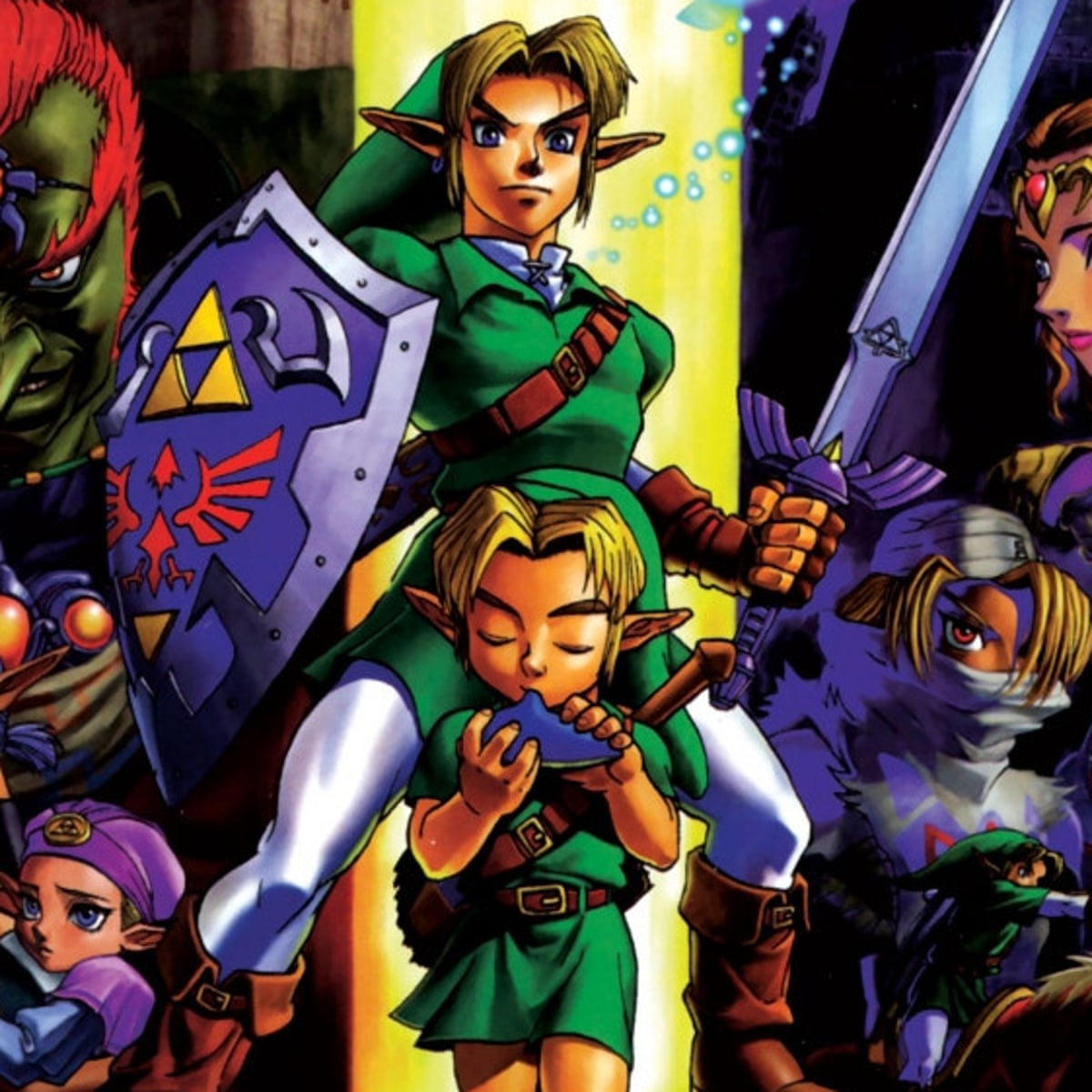It is hard to believe, but The Legend of Zelda: Ocarina of Time turns 25 years old today. That’s 9131 days for those of us who like to keep count of such things.
That’s a long time, if you were 13-14 years old like me, you are now approaching 40, might have kids (some that could be the age that you were back in 1998, and are, yourself, in the ‘middle age’ stage of your life. Talk about depressing! Time flies! There is a certain level of sadness, and nostalgia that accompanies this important milestone for the game. My own mortality comes into the forefront when I look back at my dear memories of the game.
I am 39 today, and yet, at times, 1998 feels like it was yesterday.
In the 1990s Magazines Ruled Video Game Coverage, and It was a Magical Time!
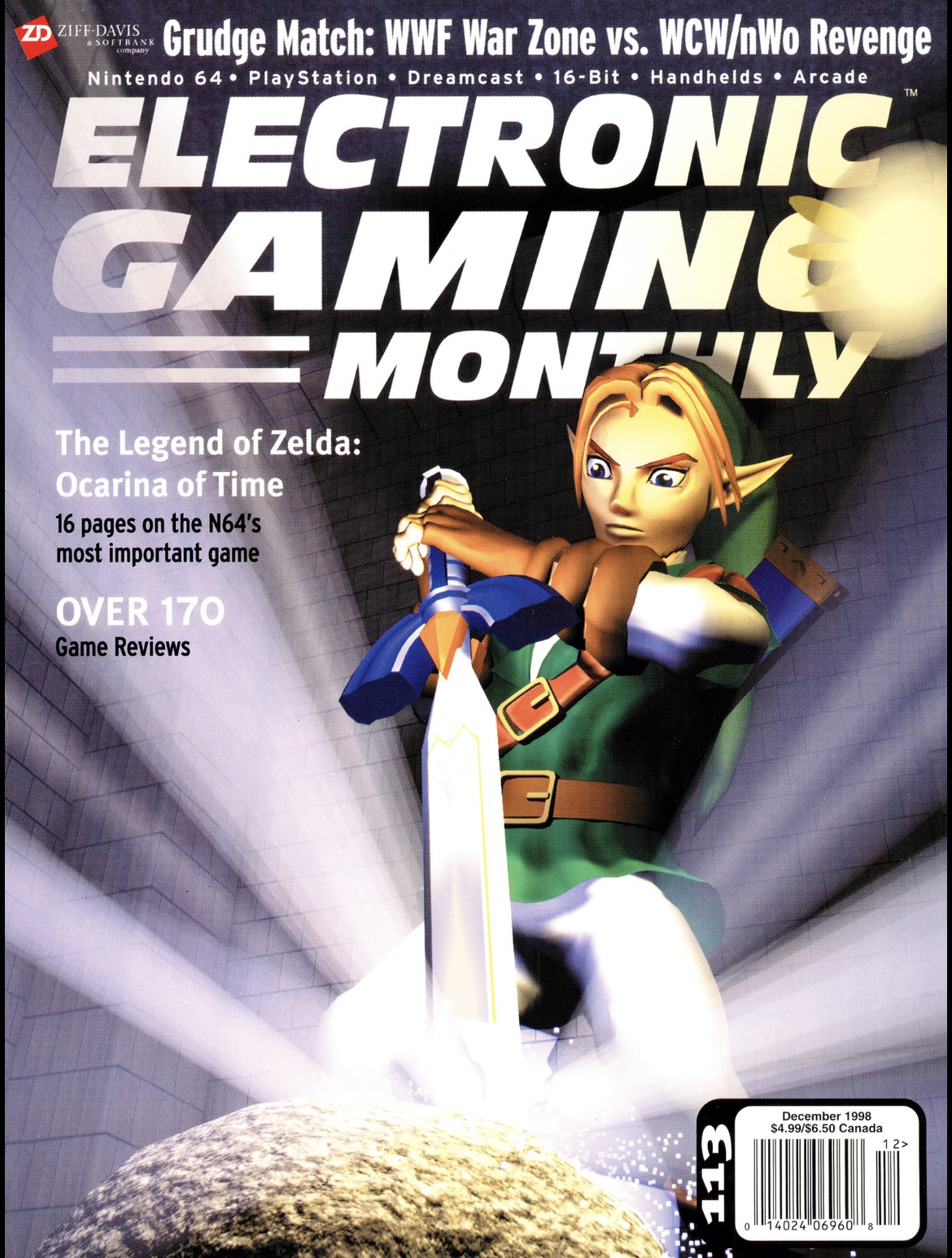
The first time I ever saw a screenshot of Ocarina of Time, the game wasn’t called The Legend of Zelda: Ocarina of Time, it was tentatively called ‘Zelda 64’ instead, and it was to be a – Nintendo 64 add-on – 64DD game, as well. It was on the December 1996 issue of Electronic Gaming Monthly that I first laid eyes on what would turn out to be – arguably – the greatest game of all time.

I was 12 years old when I first saw the article and the screenshot above. Today, in the internet and social media age, we are used to watching detailed videos previewing games. These previews at times leave little to the imagination, but in 1996, my 12 year old mind only had that one single screen shot to go on. Needless to say, the two polygonal (very blocky by modern standards) models were extremely impressive, as was the 3-D background. The smoothness of the anti-aliased visuals is something that the PlayStation, and the Saturn, couldn’t replicate. From that moment on, Zelda 64 became my most anticipated game.
At the time, off the heels of the magical Super Mario 64, and as games entered the largely unexplored 3rd dimension, my expectations for Zelda 64 defied logic. I expected a realistic looking world, with large open spaces to explore, and a diverse collection of settings in which I could lose myself in for months, and maybe even years, while exploring every nook and cranny.
Of course, Ocarina of Time would feature all that, and more, including things that I couldn’t quite imagine being featured in a game at the time. The thing is, magazine content, by nature, only would feature certain screenshots (given by Nintendo to the press), but in my opinion, this was an efficient way to build up hype and interest for a game.
The next time I recall seeing the game on a Magazine, might have been on GamePro, at that point the game looked much more complete, and a screenshot of Hyrule’s Field was showcased. Hyrule’s Field, might have been the largest open 3-D area that I had ever seen in a game.
The Magic of E3

As it is customary with Nintendo, details and screens of The Legend of Zelda: Ocarina of Time were hard to come by. As the internet age took over, and written publications began to die out, so did E3’s relevance. At some point, publishers figured out that it was cheaper, and less troublesome to announce, and present games themselves over their websites, and YouTube channels. Still, during the late 1990s one could say that E3 was reaching its absolute peak, and I can’t recall a year that was more exciting than 1998 was for gaming as a whole.
Resident Evil 2, Metal Gear Solid, Panzer Dragoon Saga, Xenogears, and Tekken 3 are some of the contenders that Zelda had to beat out in order to win Game of the Year honors. All the aforementioned games were great, specially for the era. At the same time, it could be argued that Ocarina was head and shoulders better, and more revolutionary than any of them. In terms of an epic interactive experience, Ocarina of Time had no rival up to that point.
It is not surprising then, that just like Super Mario 64 before it, Ocarina would walk away with nearly every major Game of the Year award for 1998, which could be argued was gaming’s greatest year ever.
Horse Riding is Common Staple of Open World Games Today…They All Have Ocarina of Time to Thank for it
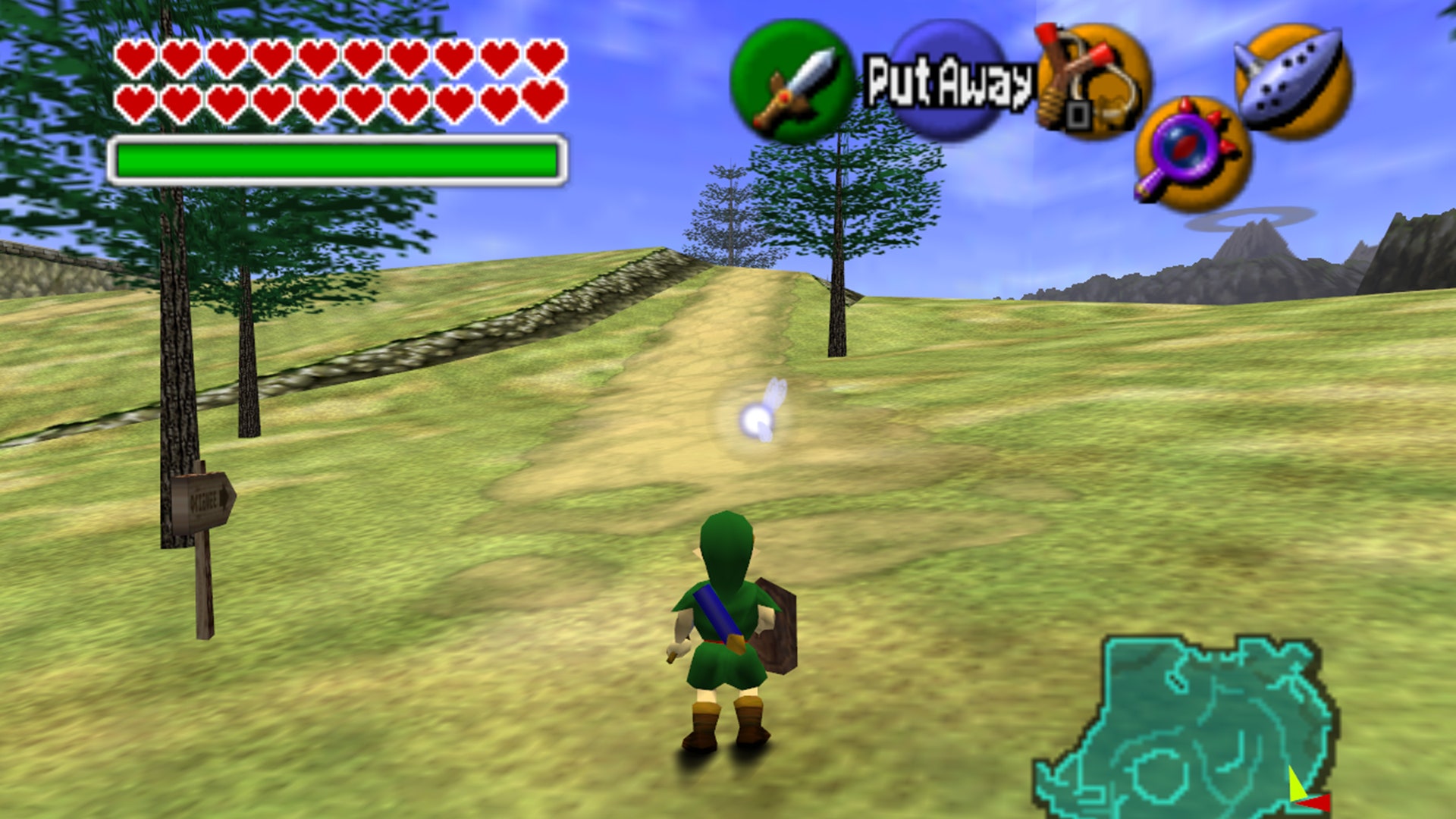
For those you born in the late 1990s, or beyond, horse riding in open world fantasy games is a given. You all take this feature for granted. In 1998, however, this was one of the many revolutionary features that Ocarina of Time introduced into the gaming space.
The idea to have a horse in the game came from (Zelda/Mario creator) Shigeru Miyamoto. Miyamoto deeply discussed many of Ocarina of Time’s elements in an interview by former Nintendo Global President Satoru Iwata. When the late Iwata asked Miyamoto about his decision, and fervor to implement a horse, and horse travel in the game, Miyamoto gave an insightful answer:
I suppose because we grew up with (cowboy) Westerns. They had a big influence over me. And the drinking spouts at elementary school always had aluminum cups. We used to flip those over and knock them against the concrete in rhythm so it sounded like a horse galloping. That’s how much we all loved horses when we were kids. That rhythm is ingrained into us. That’s why I really wanted to make it so you can ride a horse in the Ocarina of Time. – Shigeru Miyamoto
Okay, so that might have not been the most technical answer that Miyamoto could have given for the revolutionary inclusion of a horse in a 3-D open world action adventure RPG in 1998. In an interview with Screen Rant, Miyamoto elaborated further into his decision to feature Epona the horse in the game,
The scenes with Epona were the result of long discussions with Yoshiaki Koizumi (who was also responsible for Link’s design this time). The reason we chose a horse is because we wanted the vehicle, or mode of transportation, to be something that brought you into contact with others. That choice is also a reflection of the staff’s understanding of what “Zelda-ness” means, to be sure.- Shigeru Miyamoto
The reality is that Epona was put into the game because Miyamoto wanted Ocarina of Time to pioneer a lot of different things within a 3-D space, and he loved horses. According to current his protege, Eiji Aonuma, the horses was needed in order to travel across the vast landscape of Hyrule quickly, but the main reason for Epona’s existence was Miyamoto’s love for horses.
Apart from being a method of transportation, Epona, was integral for the storyline, and for Link’s relationship with her caretaker, Malon. The horse would also become a key game play element of fun for horse races, and horse archery games. Epona was also a “living” character, and it was specially to her as a cub during Link’s childhood period, and then as a fully grown horse…matching Link’s own transformation.
While Epona the horse was integral to the game, Ocarina’s NPCs were also iconic, mainly because nearly everyone of them had something to offer to Link, be it a Milk Bottle, Heart Piece, Game Item, etc. All were important, and I don’t think that I remember a cast of NPCs in any game more fondly than I remember Ocarina’s.
No Zelda has Ever Been More Visually Impressive at Launch Than Ocarina of Time was in 1998
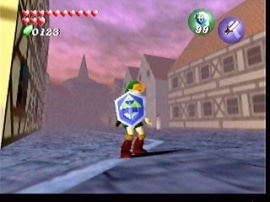
Perhaps, among many other qualities, it was Ocarina of Time’s visual splendor that impressed the most. By 1998, we had already seen screenshots of Dreamcast games in America, but unless you had a pricey 3D card accelerated PC, the Nintendo 64 still ruled the roost in terms of powerful home hardware. The Nintendo 64’s 3-D rendering capabilities were beyond the PS1 and Saturn’s and it showed in games such as Super Mario 64, Banjo-Kazooie, and Golden Eye. All of the aforementioned games were impressive during their respective launches, with Super Mario 64, and Golden Eye taking the Game of the Year honors in 1996, and 1997, respectively.
To this day, I can’t quite describe the magnificence of Ocarina of Time’s visuals at launch. For starters, the character models which were frequently featured in the game’s real time cutscenes, were less blocky than previous Nintendo efforts on the machine. This seemed like a huge leap for me at the time. The characters had facial (drawn, but changing) expressions, making these models one of the more “realistic” looking ones within a fantasy game on the market.
To aid in the realism, Nintendo applied real time lighting sources to light these characters,
That’s because in Zelda, we’ve put a heavier emphasis on lighting. We carefully positioned the lighting sources in each stage to make sure it cast the right shadows on the characters. You noticed Link’s shadow gets longer in the evening, right? I think that’s the biggest difference in expression, between the new Mario and Zelda. Other than that, the kinds of textures we apply are different, and the color choices have a totally different lineage, of course.- Shigeru Miyamoto (1999 Interview)
What The Legend of Zelda: Ocarina of Time did better than any game before it, however, was convincing players that they were indeed playing, and for 14-year old me, living in a ‘real’ fantasy world. From the humble beginnings in the Kokiri Forest, to the Majestic Waterfalls of Gerudo Canyon, Ocarina of Time was packed with details.
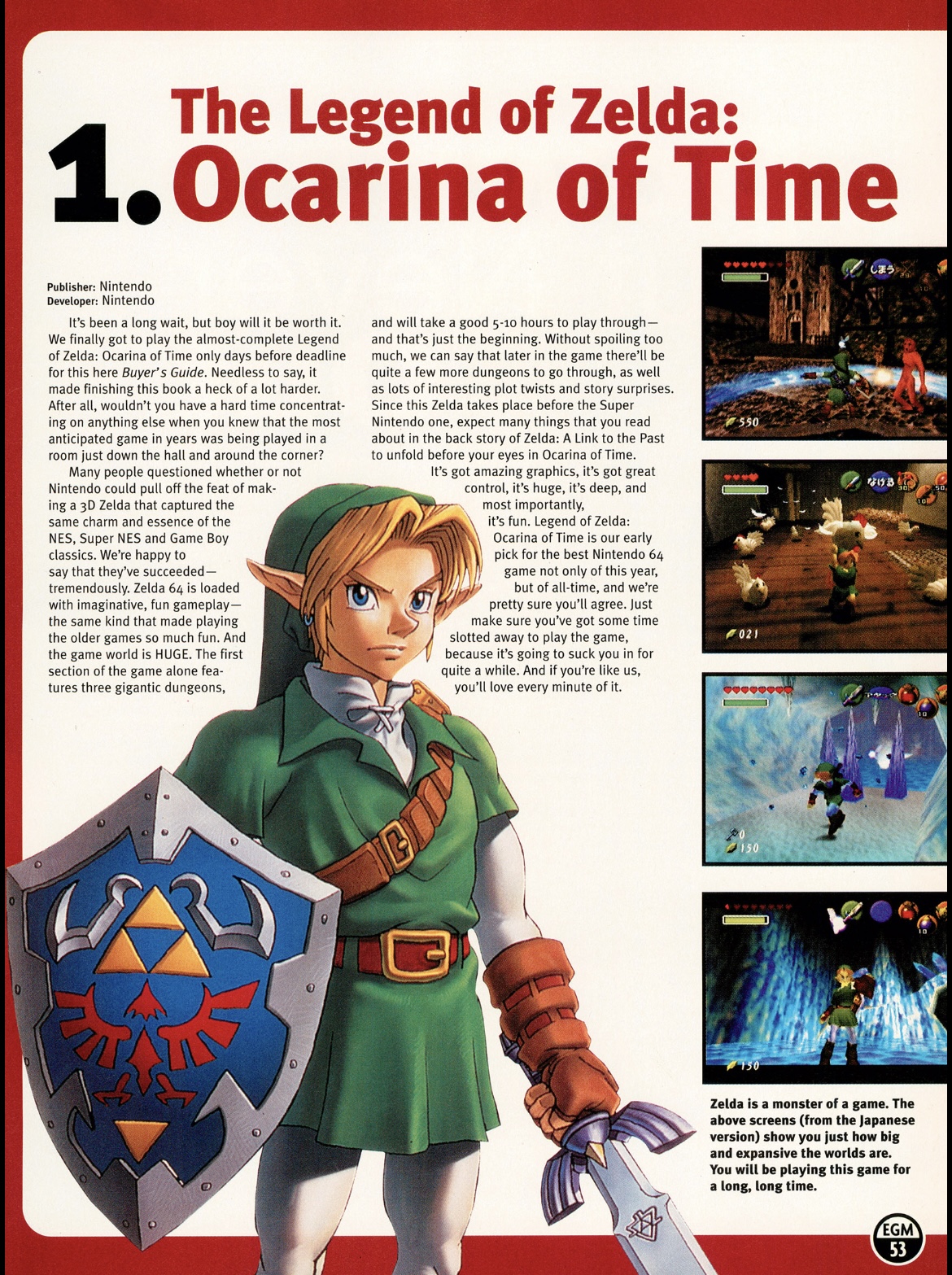
The game’s gigantic bosses might seem small by standards set in subsequent games in both the Zelda series, and other games that came after Ocarina of Time. But before all of those games decided to implement gigantic bosses, Ocarina of Time set the standard in 3-D that all others would follow.
Queen Gohma was impressive, but to me, facing King Dondogon, and hearing his roar for the first time was a life altering moment. He looked positively gargantuan when compared to 10 year old Link. It was an epic moment that I will never forget. The size of Ocarina’s bosses were fitting within the massive, if unprecedented, scale of the game world, and its areas.
The game’s dungeons were massive in size, and expertly hand crafted with stellar puzzle design. Yet, as amazing as these were, it was Ocarina’s overworld and cities which really left an everlasting impression within me. Kokiri Forest was a magical introduction to the game, I remember how mesmerized I was at the beauty of the forest, and lively its Kokiri Inhabitants seemed.
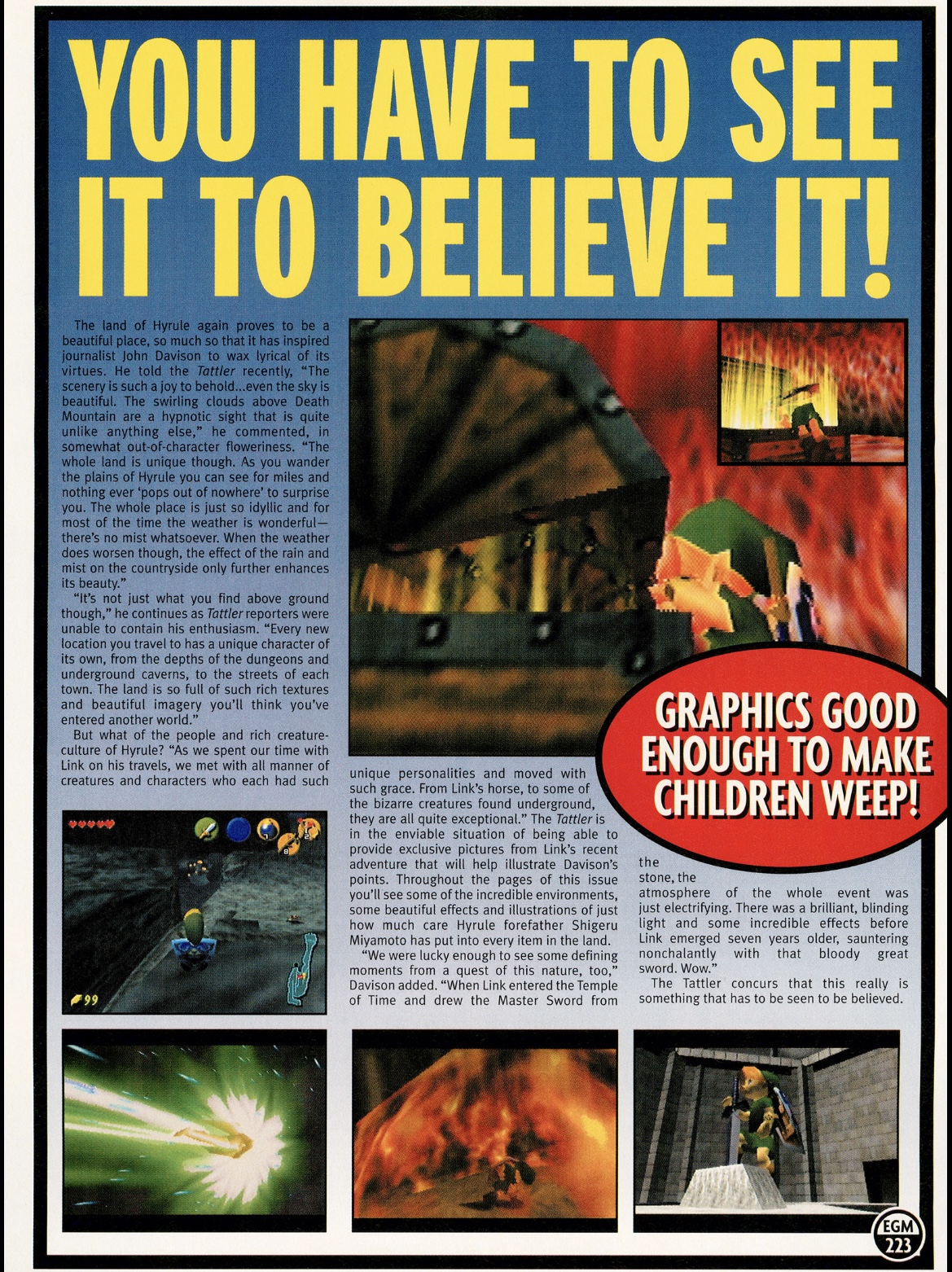
Why I could keep ranting about Ocarina’s graphical prowess for 1998, it is the first time that players walked into Hyrule Field that the game really destroyed its contemporaries, and set a standard for Action-RPGs, and Open World games that would come after it.
During my magazine reading stints a young teen, I must have missed the day/night cycle reports, because I was stunned, as I made my way to Castle Town, and the game’s lighting and sky colors began to change as the Hylian sun faded into the horizon giving way to a clear skied night…full of skeleton zombies. To this day, 25 years, and 1,000s of games later, Ocarina of Time’s 1st day/night cycle remains the most jaw-dropping moment of my entire gaming life.
No game had ever surprised as much before it, and none have matched that shock and awe moment since. Ocarina of Time is best looking Zelda game at the time of release, and also the most technically advanced one. Simply put, only the (1 year away) Sega Dreamcast had the horse power to run the game. The N64’s contemporary rivals, the PlayStation 1 and the Saturn, would not have been able to handle game as huge, as polygonal, and as forward thinking as Ocarina of Time.
While Twilight Princess, and BotW look better, today, at the time of their release, however, the Xbox 360 and Oblivion were around to keep Twilight grounded, and open world games in the PS4 looked a generation ahead of the Switch’s classic, as well.
It could be easily argued, that given its size, and diversity of environments, Ocarina of Time was the most impressive looking game of 1998 on home consoles.
The Variety of Things To Do in the Game Was Staggering
Masterful 3-D controls are a given for any Nintendo EAD made game. Even in the early 3-D games, Nintendo, thanks to the N64’s analog stick got 3-D movement right. But Ocarina did more than that. It set standards, and gaming design conventions that continue to be followed today by modern action-RPGs.
Miyamoto introduced an “auto-jump” ability for Link. When Link moved towards ledges a jump would take place, with the distance of said jump being influenced by how fast the player approached the jump. At first, coming from Platformers such as Super Mario 64, and Banjo-Kazzooie – games in which the player could make their avatar jump at will – the mechanic felt awkward, but only for a few minutes of play. Eventually, jumping felt natural, and even ‘proper’ for this type of game.
Horse riding was intuitive, and felt awesome, as well, especially for those us who had the ‘Rumble Pak’. Perhaps, most enduring was the ‘Z’ targeting mechanism that allowed Link to target specific enemies in sword, bow, and boss fights. This was revolutionary at the time, and if you play any type of open world today, you are likely to see a version of this system implemented during play.
But Zelda was always about solving puzzles, finding secrets, and fighting monsters. Ocarina translated these elements into 3-D beautifully, but given the effort that was made into creating a living open world, other interactive tasks were needed, and Nintendo answered the call.
I spent hundreds of hours horse back riding, practicing diverse archery games, and perhaps more importantly, fishing. Final Fantasy VII, did something similar first. That game had fairly elaborate motorcycle, and snowboarding minigames, but I would argue that nothing we had seen at that point from a video game’s “side ventures” matched Ocarina’s Fishing game.

It was game that utilized the Nintendo 64 controller (and Rumble Pak features) to the max. It is also a mini-game that probably could have been sold as a stand alone game successfully. All in all, every nook and cranny in Ocarina of Time seemly had a purpose or a secret to be uncovered. It remains one of the smartest – in terms of design – overworlds in gaming.
Finally, I want to discuss the Ocarina itself, as an in-game tool and musical instrument. To me, it has been the most versatile, and great sound musical instrument with in the saga, but in Ocarina is the key to controlling time, weather, and even the day and night cycle. The Legend of Zelda: Ocarina of Time introduced a lot of ‘firsts’ for players in 1998. No one could have conceived in the early days of the game’s development just how massive and how important within the confines of setting a standard for 3-D gaming, Ocarina of Time would turn out to be.
Musically speaking, the game is flawless. True, the Nintendo 64, due to its limitation in memory (cartridge), did not have as elaborate sounding soundtracks, as some of the PlayStation’s best RPGs, but the melodies in Ocarina of Time were gold, and have aged fantastically well. Crafting songs in the Ocarina was also a great time waster back in the day.
How the World Received It

The Legend of Zelda: Ocarina of Time, continues to be, a quarter century later, the best rated game on Metacritic… of all time. With a 99 rating, it is possible that Ocarina never meets its critical match. I would be fine with that, I agree with the consensus scoring. In my opinion, The Legend of Zelda: Ocarina of Time is greatest game ever at the time of its release. Nothing has come close since, and perhaps, nothing will until games move into the 4th dimension.

Looking through 1998’s glasses, I cannot find a flaw within Ocarina of Time. Sure, the frame rate (20fps) by today’s standards was low, but back then, this was a solid number in massive 3-D titles (and there was none more massive than Ocarina). Beyond that technical limitation, there is nothing negative to say about the game, no flaws, it was a truly the perfect game.
Definitely more perfect than anything released before or since within the form of entertainment. In truth, Ocarina benefited from the 3-D medium being fresh. Running around, wasting dozens of hours, in iron boots under every body of water in the game was a compelling experience. In great part because I couldn’t perform this action in any other game that looked nearly as gorgeous. Jumping off Gerudo’s massive cliff into the blue refreshing river at the bottom of the canyon was epically special. It was all so fresh at the time, so new.
But even then, Nintendo by 1998 had mastered the art of making grand 3-D experiences (they mastered it in their debut with Super Mario 64), and Rareware had done its best to clone Mario, and even create a better looking game in Banjo-Kazooie. Games in other genres, like Golden Eye, had revolutionised gaming a year earlier. 3-D was fresh , but it wasn’t new, in many ways, The Legend of Zelda: Ocarina of Time made 3-D games new again. An itch to explore a world that I hadn’t had since Mario 64, was rekindled by Ocarina of Time, and for that, and for impacting my life in ways I only comprehended decades later, I thank Nintendo, and its crew wizards.
So, how much do I love Ocarina of Time? How about ‘eternally’? I started a sleeve tattoo on my left arm, making Ocarina of Time the theme for it. As much as I loved Final Fantasy VII, it wasn’t worth mutilating my arm for it! Ocarina, however, is worth that, and more! The game will forever be with me, in my heart, memories, and in my skin!


So, a toast for a quarter century of what, in my opinion, remains the greatest game of all time! Enjoy the old magazine clips, I know that I did, and even cried a little, as I read them while writing this article! Happy Thanks Giving!


Agree with the author? Couldn’t disagree more and are frothing at the mouth to tell him? Leave a comment here, on Facebook or send an email and make sure to follow Never Ending Realm on Facebook, Twitter, and YouTube!
